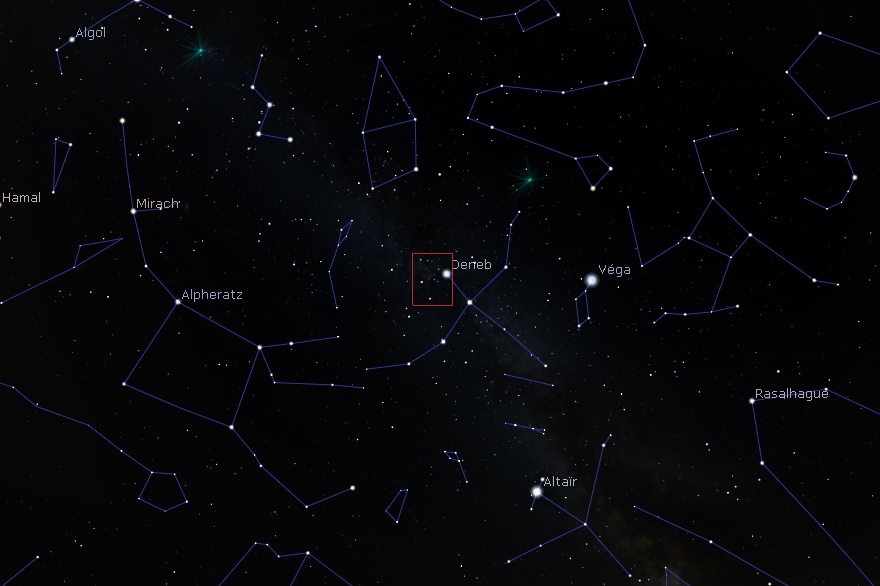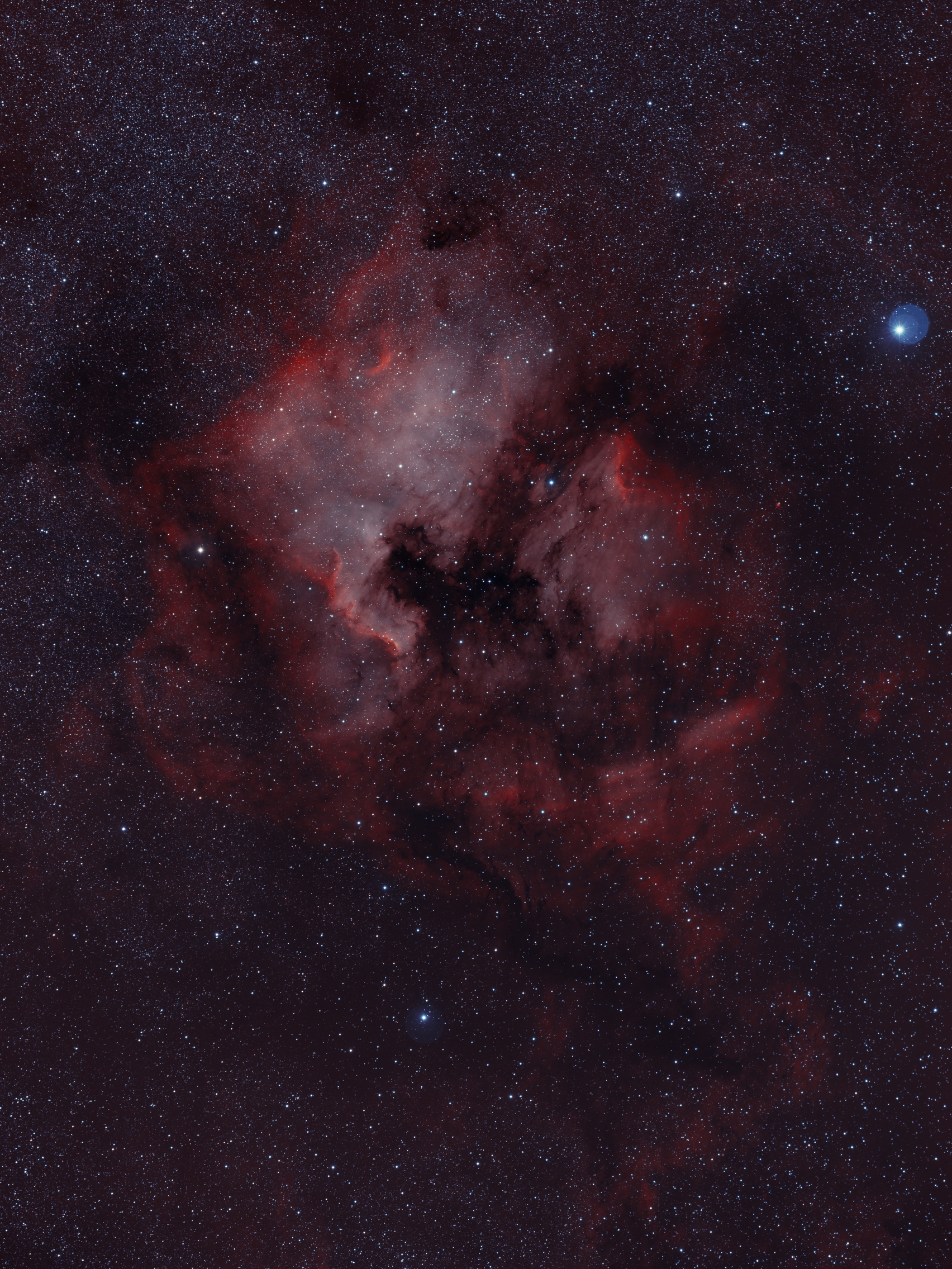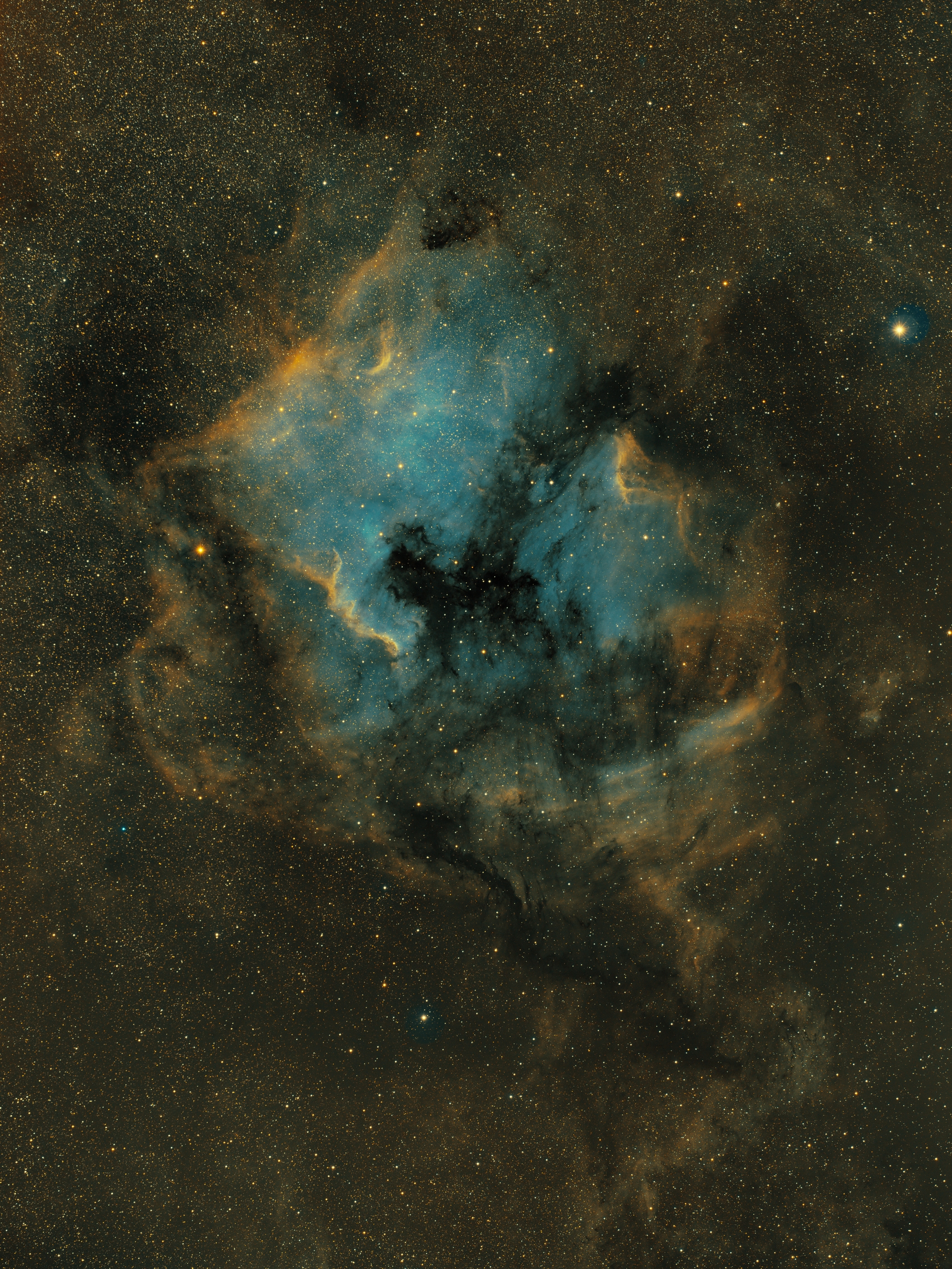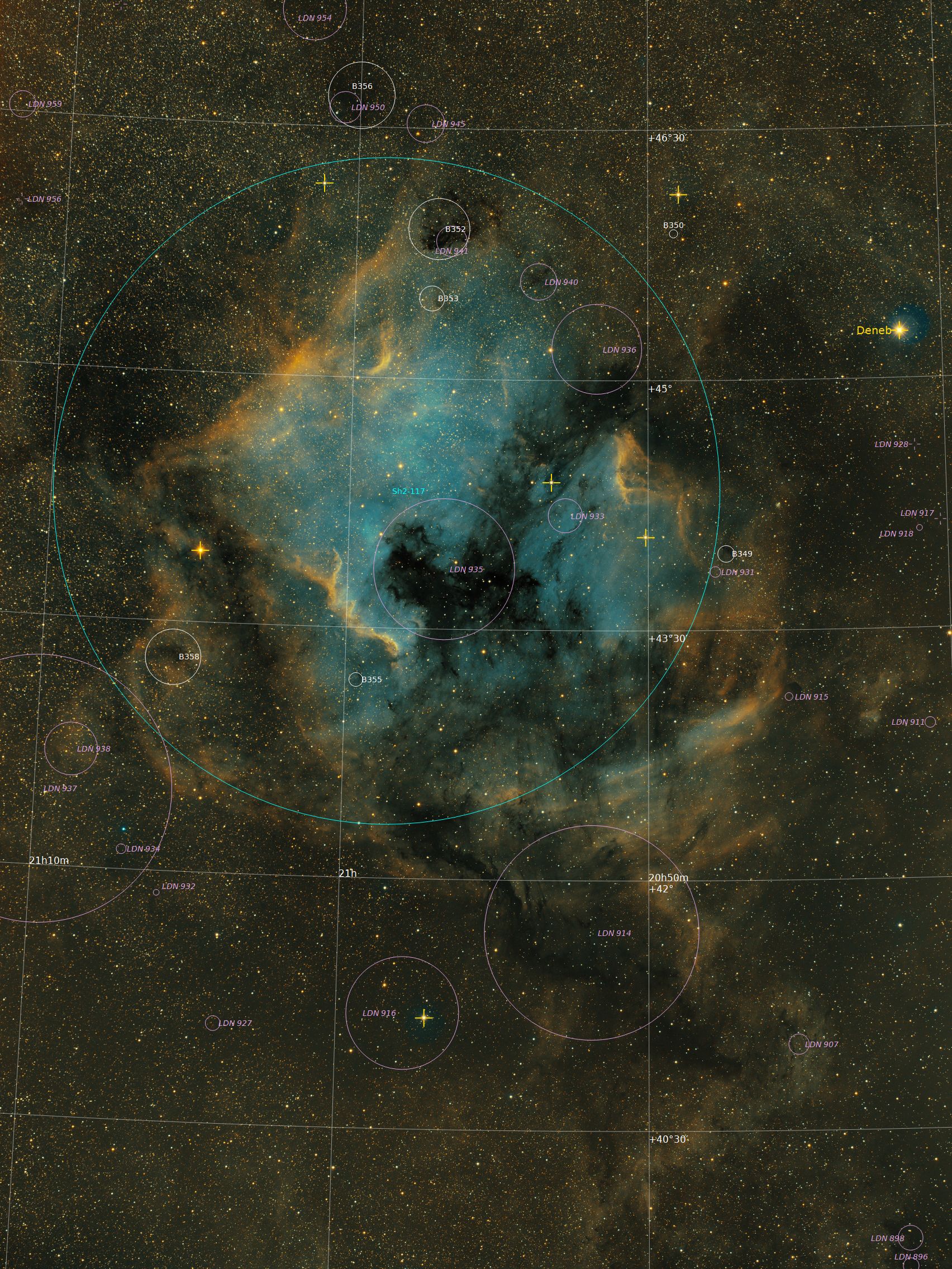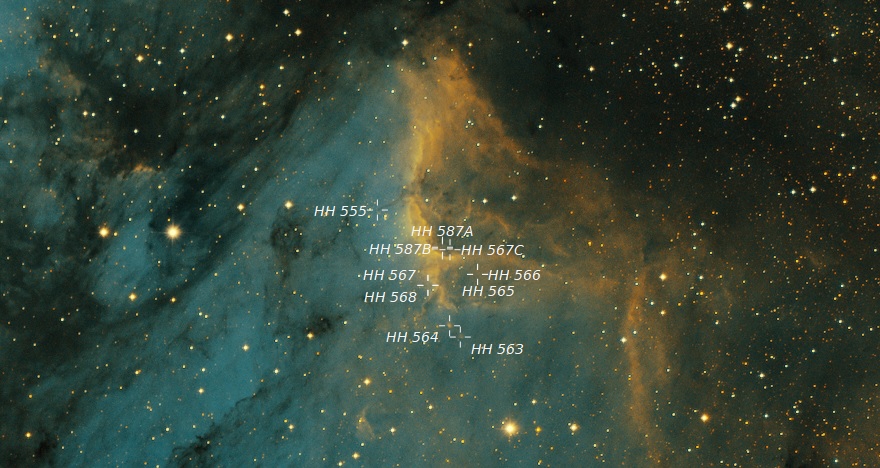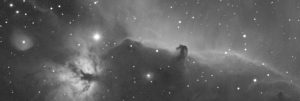11h50 exposure (Ha/OIII/SII:4h50/3h30/3h30 sub:300s)
Acquired on 3 nights of 2019 (08/25, 09/04 and 09/12)
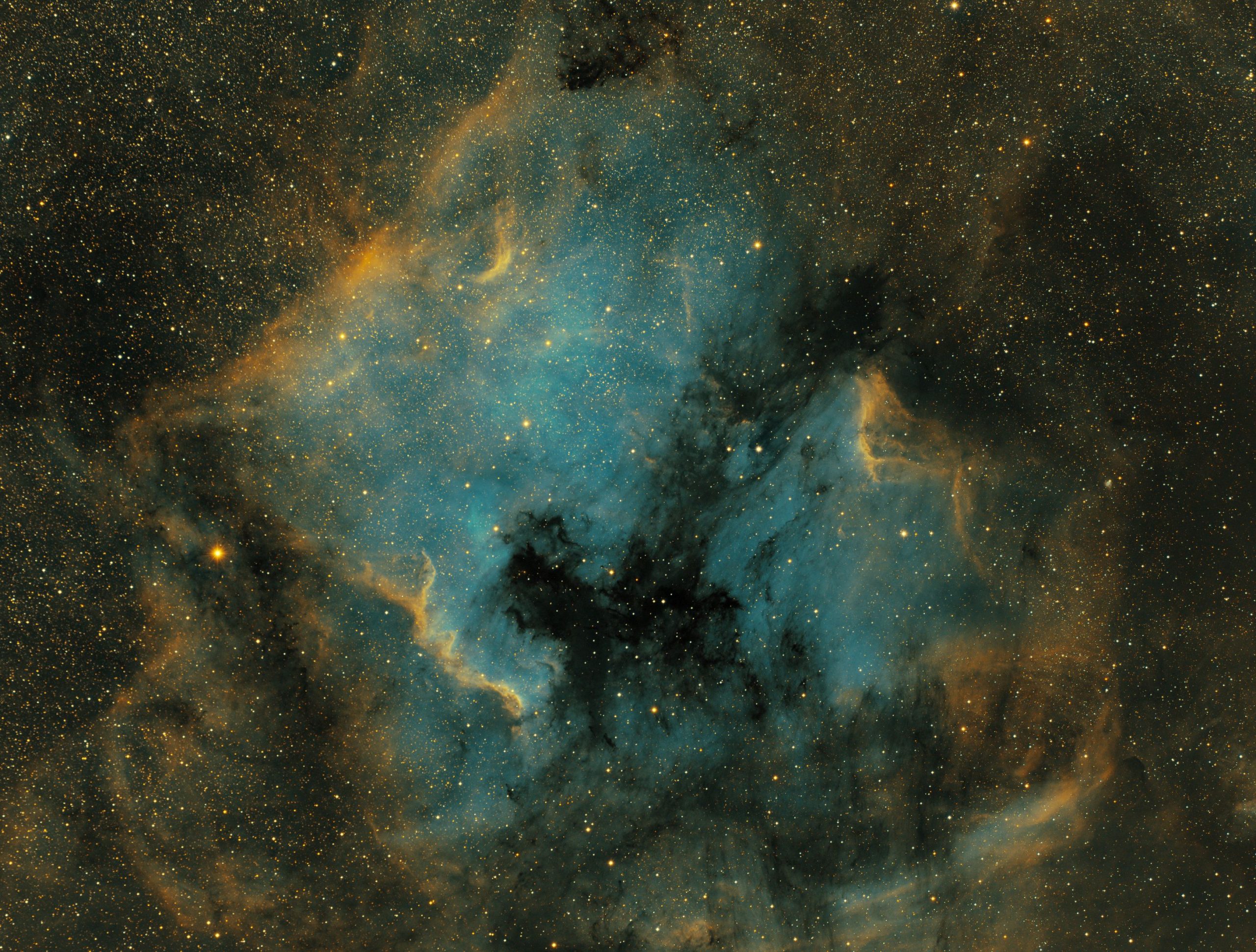
Setup: Samyang 135mm F/2 @F/2.8, AZ-EQ6, QHY163m gain=100, QHYCFW2-M, AstroLink 4 mini, QHY5L2M. Software: APT, Stellarium scope, EQ MOD, PHD2
This is an another famous target, very bright and very high in the summer sky: the North America nebula also named NGC7000. And this nebula is not alone on this image…
Location
North America nebula lies in the Cygnus constellation near Dened star. Dened is a brigth star with an average apparent magnitude of 1.25 that cannot be missed. With Vega and Altair, they form the summer triangle, a remarkable asterism.
NGC7000 – HOO full field
This first HOO images below is a combination of shoots in Ha and OIII bands. Red channel embeds Ha whereas green and blue channels include both OIII. Preprocessing and HOO combination is made under Pixinsight and the final processing is executed under Photoshop.
NGC7000 – SHO full field
This second image is the SHO version. This is a combination of shoots in Ha, OIII and SII bands. Red channel embeds SII, green channel includes Ha and blue channel contains OIII. Preprocessing and SHO combination is made under Pixinsight and the final processing is executed under Photoshop.
SH 2-117
The HOO picture below contains annotations of Messier’s, NGC and IC objects:
The image contains 3 main objects:
- The North America nebula referenced as NGC 7000
- The Pelican nebula or IC 5070
- IC 5068
These 3 emission nebulas are all HII regions forming the same object referenced as SH 2-117 in the Sharpless catalog. This HII complex is heavily obscured by dust located in front (LDN 935). Wikipedia mentions that this dust is part of the Great Rift which are bands that obscure the center of the Milky Way galaxy from Earth’s perspective. In term of distance, the Great Rift lies between 2600 and 3300 ly from earth whereas Sh2-117 and LDN 935 are given for about 1900 ly. So it my interpretation is that the Great Rift which starts North in Cygnus constellation is much closer from earth here than the given values.
YSO and HH objects
The area contains also numerous young stellar objects (YSO) which are stars in their early stage of evolution, before they enter in the main sequence of the Hertzsprung-Russell diagram. Among them, the Simbad catalog lists a few Herbig-Haro (HH) objects. HH objects form when narrow jets of partially ionised gas ejected by stars collide with nearby clouds of gas and dust at several hundred kilometers per second. The Pelican nebula contains several of them with HH 555 and HH 563/564 that are partially visible on the crop below.
HH objects annotated via Pixinsight by extracting Simbad catalog with Aladin software
For more details on YSO and HH, refer to this amazing website below and click on “young stellar objects” on the left: http://www.reinervogel.net
Conclusion
Samyang 135mm is perfectly suited for this wide field of nebulosity. With the QHY 163m on it, all the SH 2-117 complex is captured with dark clouds in front (LDN 935) and arround. And at looking closely, some young and small objects like Herbig Haro give a good excuse to come back here with a longer focal length… NGC7000 is clearly not alone on this picture!

